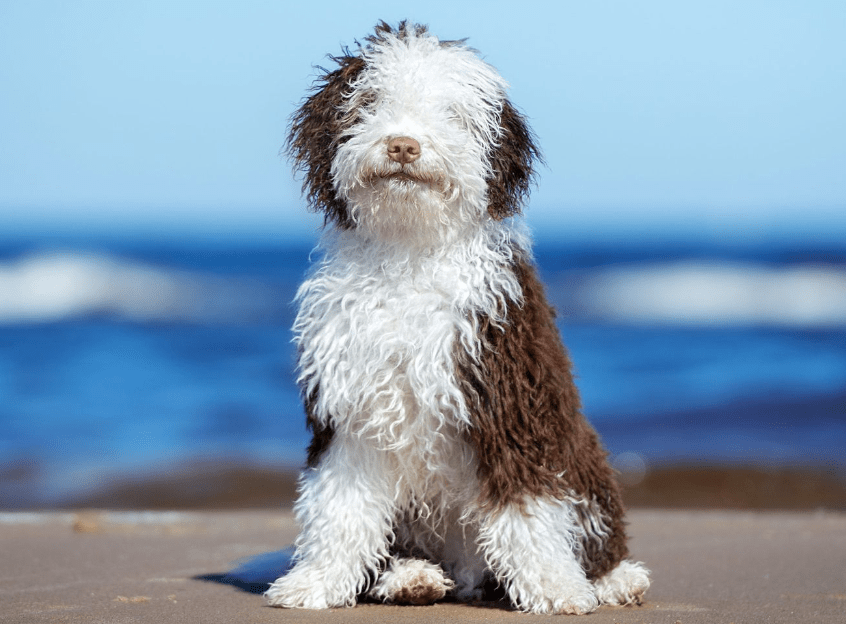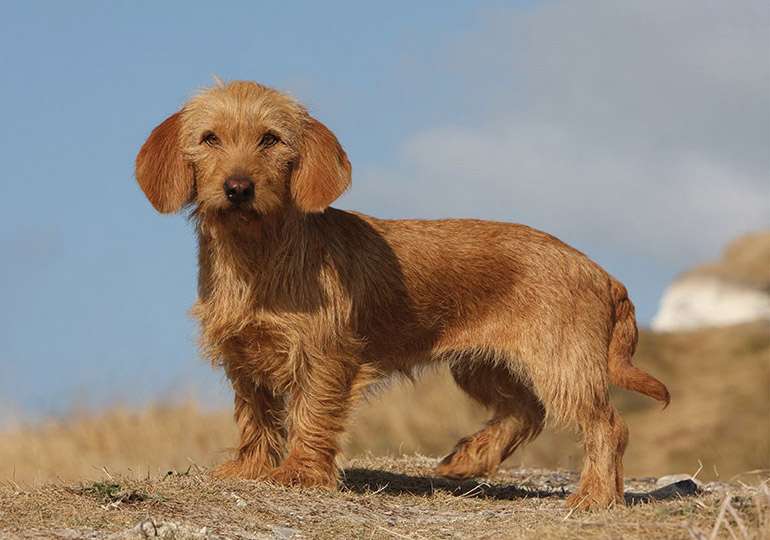
Description
The endless Spanish Water Dog is a dual-purpose breed distinguished by a woolly coat of curls. This country charmer is a vivacious family friend and watchful guard dog who is used as a herder and waterfowl retriever in his native nation.
The garment sets the tone for the distinctive appearance of these never-ending labourers. It has natural curls and wool from head to toe, and as it grows out, it frequently takes the shape of tight, tapered cords. The facial hair in a heavy coat hides the expressive dark eyes. Black, brown, beige, white, or particolor (black, brown, beige, and white) are all acceptable colour choices.
Origin/History
The Spanish water dog has been around for hundreds of years in some parts of Spain, primarily the Iberian Peninsula, although its exact origins are unknown. It’s likely that the dog’s ancestors originated in Northern Africa, but according to another hypothesis, Turkish traders brought the dog over.
The locals required a dog that could adapt to various weather conditions. A breed that could perform a number of tasks, such as herding, swimming/waterfowl retrieving, and protection, was also desired. And the Spanish water dog satisfied every need.
As machines took over many of the breed’s jobs at the turn of the 20th century, its popularity began to decline. Breeders, however, worked hard to keep its characteristics. The breed was initially acknowledged by the American Kennel Club in 2015.
Temperament
The Spanish water dog’s personality is built on high energy. These dogs typically have a positive outlook on life and enjoy working. They are eager to learn and highly intelligent. It thrives at training and is often highly friendly, playful, and loyal to its family.

Care
A Spanish water dog needs plenty of activity every day to stay happy and healthy. In the same way, it takes constant training to become a polite dog. It also requires some specific grooming requirements, however they don’t take a lot of time.
Exercise
Spanish water dogs are highly active both mentally and physically. They should engage in strenuous games of fetch, lengthy walks, running, trekking, swimming, and other forms of exercise for at least one to two hours each day. If you want a dog for jogging, they can make great companions. Additionally, ideally, they should be permitted to play and run off-leash in a safe environment. They also do well in dog sports like dock diving and agility, which may be cognitively and physically demanding.
Grooming
The low-shedding coat of the Spanish water dog doesn’t need much upkeep, although its maintenance is a little unusual. The coat is typically never combed, blow-dried, brushed, or clipped. When opposed to this, it is sheared down to the skin when required, just like a sheep. Before shearing, some owners let the curly hair grow to a medium length, while others let it grow longer and create its natural cords. You frequently have several months before the coat needs to be sheared, depending on your tastes.
It does take some effort to maintain the cables because they need to be divided to avoid mats. A dog with a corded coat must be bathed differently than a conventional dog. No conditioner should be used; instead, gently squeeze the shampoo into the coat without rubbing or scrubbing. You must gently squeeze the coat one more as the water goes through it to finish the rinse. Blot the coat dry with a towel (don’t massage it), then leave it to dry naturally.
Beyond that, check your dog’s nails to see if they require trimming every four to six weeks. And strive to regularly brush its teeth. Additionally, check the animal’s ears at least once a week for anomalies and wax buildup. The ears of your dog should be thoroughly dried after swimming.
Training
Spanish water dogs have exceptional problem-solving abilities and are quite bright. They respond well to constructive teaching techniques like clicker training, which makes use of lots of delectable rewards and praise. They might shut down and fail to learn if you give them harsh corrections. To stop these intelligent dogs from learning they can get away with negative behaviors, start educating them as early as possible.
Additionally, begin socializing your dog as a puppy by exposing it to diverse people, other dogs, and varied environments. Positive interactions can greatly reduce this dog’s protective drive and educate it to feel secure and at ease.
Diet and Nutrition
Keep clean water on hand at all times for your dog. And feed your dog a high-quality, nutritionally-balanced meal. Instead of leaving food out all day, it’s normal to feed your dog two measured meals per day to guarantee sufficient nutrition. But make sure to go over the type and quantity of the diet with your vet.
Your veterinarian could advise a particular diet because certain Spanish water dogs are prone to food allergies. Additionally, Spanish water dogs with high levels of activity may need a performance diet with extra calories and fat. To stop your dog from overeating, keep an eye on treats and other additional food at all times.
Table





